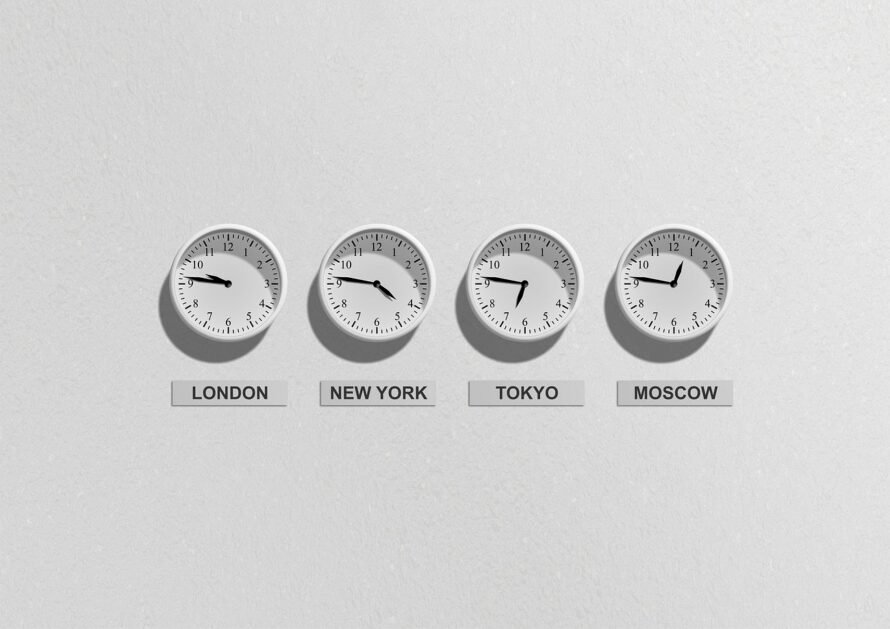Many people mistakenly think that DST year-round would be a good thing, resulting in “more daylight” in the evenings and not having to change the clock.
However, Shorter days are a feature of winter, and daylight saving time in the winter would not result in longer evenings.
Daylight saving time (DST) is the practice of setting the clocks forward one hour from standard time during the summer months, and back again in the fall. This is done to make better use of daylight, and allegedly, save energy by reducing the need for artificial lighting.
However, DST in the winter would not result in longer evenings. This is because the length of the day is determined by the position of the Earth in relation to the sun, and not by the time on the clock.
In the winter, the Earth is tilted away from the sun, which means that the days are shorter. DST would not change this.
In fact, DST in the winter would make the mornings darker and wouldn’t significantly extend the evening as winter days are shorter.
For example, if the sun normally rises at 7:00 AM and sets at 5:00 PM, then with DST in effect the sun would rise at 8:00 AM and set at 6:00 PM, still making it difficult for people to enjoy outdoor activities in the evening, as there are less daylight hours in the winter.
One of the biggest problems is that it makes the mornings dark and cold, especially for people who live in higher latitudes. This can make it difficult to get up and ready for work or school, and can also lead to increased risk of accidents and injuries..
Another problem with DST in the winter is that it can disrupt our circadian rhythms. Our circadian rhythms are our internal body clocks that regulate our sleep-wake cycle, body temperature, and other bodily functions. DST can disrupt our circadian rhythms by shifting our sleep-wake cycle one hour later. This can lead to sleep deprivation, fatigue, and difficulty concentrating.
In addition, DST in the winter has been linked to an increased risk of cardiovascular disease, depression, and anxiety.
Here are some specific examples of the negative consequences of DST in the winter:
- Children are more likely to be late for school in the winter when DST is in effect.
- There is an increased risk of car accidents in the days following the spring switch to DST, and this risk is even higher in the winter.
- People are more likely to experience sleep deprivation, fatigue, and difficulty concentrating in the winter when DST is in effect.
- People with cardiovascular disease, depression, and anxiety are more likely to experience worsening symptoms in the winter when DST is in effect.
For all of these reasons, it is clear that DST in the winter is a bad idea. We should consider switching to year-round standard time to improve our health and well-being.
Myth: DST saves on energy consumption.
There are a number of studies that show that daylight saving time does not save energy consumption, or may even increase it.
One study, published in the journal Science in 2008, found that daylight saving time increased electricity consumption by 0.244% on average. The study also found that the increase in electricity consumption was greater in the spring than in the fall.
Another study, published in the journal Nature Energy in 2017, found that daylight saving time did not save energy in the United States. The study also found that daylight saving time increased air conditioning consumption in the summer.
A third study, published in the journal Energy Policy in 2018, found that daylight saving time increased electricity consumption in the United Kingdom. The study also found that the increase in electricity consumption was greater in the summer than in the winter.
It is important to note that the results of studies on the energy impacts of daylight saving time can vary depending on a number of factors, such as the location of the study, the time of year, and the methodology used. However, the overall body of evidence suggests that daylight saving time does not save energy, or may even increase it.
For these reasons, many experts believe that we should switch to year-round standard time.
Benefits of Standard Time
Standard time is the time that is observed when clocks and watches are set according to the mean solar time of the standard meridian at a particular location. It is the most widely observed time system in the world.
There are several benefits to standard time. One benefit is that it is more closely aligned with our natural circadian rhythms. Our circadian rhythms are our internal body clocks that regulate our sleep-wake cycle, body temperature, and other bodily functions. Standard time allows us to get more sunlight in the morning, which helps to regulate our circadian rhythms and improve our sleep quality.
Another benefit of standard time is that it can reduce the risk of accidents and injuries. Studies have shown that there is an increase in car accidents and workplace injuries in the days following the spring switch to daylight saving time. This is likely due to the fact that people are more sleep-deprived after the time change. Standard time can help to reduce this risk by keeping clocks and watches set to the same time year-round.
Standard time can also benefit the economy. Studies have shown that daylight saving time can lead to a decrease in productivity and an increase in absenteeism. This is likely due to the fact that people are more tired and have difficulty adjusting to the time change. Standard time can help to improve productivity and reduce absenteeism by keeping clocks and watches set to the same time year-round.
Benefits of Year-Round Standard Time
Year-round standard time would have a number of benefits, including:
- Improved sleep quality: Standard time is more closely aligned with our natural circadian rhythms, which can lead to improved sleep quality.
- Reduced risk of accidents and injuries: Standard time can help to reduce the risk of accidents and injuries by reducing sleep deprivation.
- Improved cardiovascular health: Standard time can help to improve cardiovascular health by reducing sleep deprivation and stress levels.
- Reduced risk of depression and anxiety: Standard time can help to reduce the risk of depression and anxiety by improving sleep quality and reducing stress levels.
Year-round standard time has a number of benefits for our health, safety, and well-being. It would improve sleep quality, reduce the risk of accidents and injuries, improve cardiovascular health, and reduce the risk of depression and anxiety. It would also increase safety for children and reduce energy consumption.
Overall, the evidence suggests that year-round standard time is the best option for our society. It is time to make the switch.








